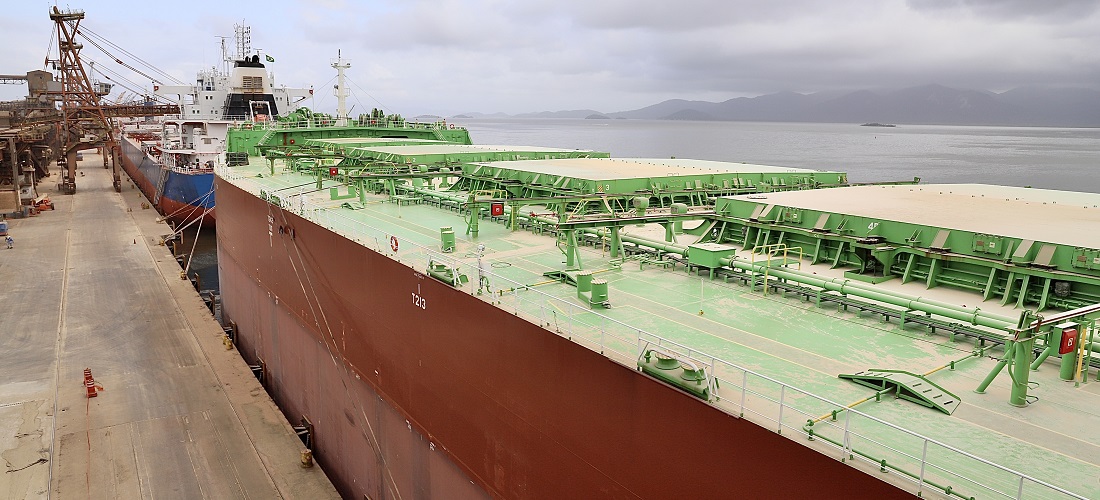
Paranaguá breaks record for largest soybean meal shipment
Apr, 14, 2021 Posted by Ruth HollardWeek 202115
The Port of Paranaguá carried out the largest shipment of soybean meal on a single vessel in its history. The Pacific Myra bulk carrier is 292 meters long (LOA) and 45 meters wide. The vessel docked at berth 214 last weekend and will transport 108,577 tons of soybean meal to the Netherlands.
The CEO of Portos do Paraná, Luiz Fernando Garcia recalled that he completes an evolution that has been going on since last year. In June 2020, 102,200 tons were loaded on a single vessel, the Pacific South. A month later, in July, 104,200 tons were shipped on E.R Bayonne. “We are now shipping more than 108,500 tons. All in the same berth. We are setting new records with each new big shipment, and managing to load more and more, safely and efficiently”, he said.
Sailing under a Panamanian flag, the Pacific Myra has the capacity to load up to 180,000 tons of solid bulk. The vessel is among the largest in the segment operating at the Port of Paranaguá.
Luiz Teixeira da Silva Júnior, Director of Operations at Portos do Paraná, explains that the costs involved in these operations are relatively lower when compared to medium-sized ships. “We are practically loading twice as much cargo on a single ship,” he said. He also pointed out that the operation involved differentiated planning by Portos do Paranaguá. Gilmar Francener, Operations Manager at Portos do Paraná, explained that the cargo left via conveyor belts from four different terminals making up the export corridor for the Pacific Myra holds. 20,272 tons were loaded through horizontal public silos;9000 tons were loaded through the Centrosul terminal; 37,327 tons were loaded through the Coamo terminal; 31,478 tons were loaded through the Cotriguaçu terminal. Cargill is the agency responsible and Tibagi is the operator.
“For this type of operation, we request a technical acceptance from the port. Portos do Paraná, in turn, authorizes the receipt of the ship through a mooring plan, evaluating the space conditions and compatibility with the ships in the adjacent berths,” he explained. Also according to the manager, during the operation, due to the size of the vessel, maneuvers such as pulling and turning the ship are necessary, so that all holds can be safely loaded. “Planning efficiency, loading agility, and operational safety are our strong points for increasing the demand for this type of operation”, concluded Francener.
Related Post
-
Ports and Terminals
Aug, 02, 2021
0
CODEBA’s record-breaking first six months
-
Ports and Terminals
Dec, 19, 2023
0
Port of Santos extends contract with BTP until 2047
-
Shipping
Feb, 11, 2022
0
ZIM charters 13 ships from Navios
-
Other Logistics
Mar, 22, 2019
0
Heavy rain washes away one section of BR-230


